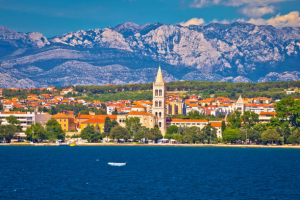Top 4 Reasons Why 70% of Spain is Empty
In the past 40 years, Spain’s rural areas have lost more than 25 percent of their population, and now they are famous with the name “la Espana vacia” – empty ... read more...Spain. In Teruel, part of Aragon, the population has declined more than nine percent in the past decade. The loss has been particularly noticeable and it has no sign of slowing down. Researchers have collected the statistics and stated some arguments why more than 70% of Spain is "empty" - due to some reasons such as high unemployment rates, lack of supporting from the government and gender balance.
-
The total number of unemployed in Spain is 2.83 million in 2022, which is the lowest unemployment force since 2007. By gender, female unemployment fell by 37,411 women compared with November 2022, to a total of 1,690,148; while male unemployment fell by 6,316 to 1,147,505.
However, Spain doesn’t suffer from a labor shortage like in the United States, but the worse issue is a rigid labor market controlled by debilitating regulations. To be precise, the Organization for Economic Cooperation and Development (OECD) generates an index that shows non-English members are far more targeted than their English-speaking counterparts, such as the United States, Great Britain, and Canada. Countries like Spain, France, and Italy have greater Employment Protection Legislation (EPL) that limits employers from hiring and firing workers.
The wide gap between these types of labor markets mostly affects immigrants and young, unskilled workers, since they are most likely to work on temporary contracts. These labor law has shown why so many Spanish workers have become discouraged and quit their job. They know that even if they are to get a job, it is only short-term, and they will have to spend more time searching for another transient and insecure job.

The unemployment rate in Spain keep rising with no sign of stopping since 2007 - Spurce: Pexels - Ron Lach 
Temporary working contract made Spanish workers unable to find a fine job - Source: Pexels - Timur Weber -
Spain's emptying rural interior has become a major political issue, emphasizing the disillusion with the country's political system among rural voters who for years have felt neglected by those in power. Many villages have been wiped out already. Others have only a few elderly residents. Children are scarce and all travel to school on a bus to sit in classes where ages are mixed. For the infrastructure and service, highways are seriously degraded, hospitals only have one or two for each region which leads to the patient and healthcare staffs overloaded. Even though many demonstrations have been raised, this issue still ignored every time it is brought to the government.
Another factor that affects both Spain’s economy and population is the high social security tax on employers, which stands at 29.9 percent and became one of the Europe’s highest taxed. Although the impact of social security on employment is contested, there would still be a depressing effect on wages and hours worked even if the incidence of the tax falls mostly on the employee.

Demonstrations were set up to bring attention to the government but the situation remained unchanged - Source: Pexels - Jo Kassis 
High taxes issue has damaged seriously to the Spain's economic - Source: Pexels - Karolina Grabowska -
With just under 337,000 babies born in 2021, Spain faced the lowest number of birth rate since 1941, according to Spain’s National Statistics Agency (INE). The average age for giving birth in Spain also reached historic highs at 32.6 years old. For mothers born in Spain, the average age hit 33 for the first time, revealed in the study of INE. Between 2011 and 2021, the number of annual births in Spain dropped by 29%. With just 1.19 children born for every woman, Spain’s historically low birth rate suggests the country’s population will fall dramatically without sustained immigration.
The number of births was far exceeded by the number of deaths, with 450,687 people passing away in 2021. That is the second-highest statistic on record, but still 8.7% lower than in 2020 when the COVID-19 pandemic arrived and the population was not protected by vaccination. The COVID-19 pandemic may have a strong influence on Spain’s low birth rate. The agency said births were lower in the first part of 2021, reflecting a decrease in conception during the country’s harsh lockdown in the 2020 spring.
Meanwhile, the number of couples marrying in 2021 was still substantially lower than in 2019. For men, the average age for married was 39.5; for women, 36.7. A 2019 UN report predicted that Spain will have the third-highest old-age dependency ratio in the world by 2050, after Japan and South Korea. Experts suggest that economic conditions are one of the main obstacles to having children in Spain.

Spain faced the lowest number of birth rate since 1941 - Source: Pexels - Nataliya Vaitkevich 
The number of couples marrying was also gradually fall since 2019 - Source: Pexels - cottonbro studio -
The Spanish population is also set to get older, with the percentage of the population over 65 years of age predicted to reach the peak in 2050. Equally, the working-age population is also set to decline. The Spanish population between 20 and 64 years of age, which in 2022 is 60.7 percent of the total, is stated to be down to 53.1 percent by 2052.
In simple thoughts, with the population aging but the proportion of working people falling, this trend surely makes both Spain’s employment market and social care sector worrying. This is partly why the proportion of foreign-born residents is expected to rise so much in Spain. As the number of working-age Spaniards shrinks, a bigger immigrant workforce will be required to fill the gaps.

Aging Spanish population predicted to reach the peak in 2050 - Source: Pexels - Pixabay 
The proportion of working people is falling, which making both Spain’s employment market and social care sector anxious - Source: Pexels - Marco Carmona





















